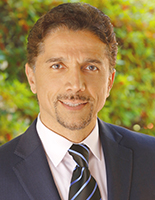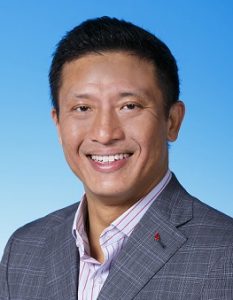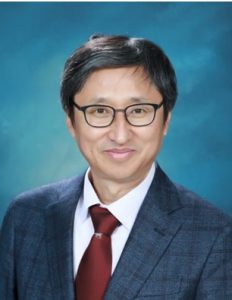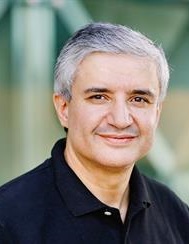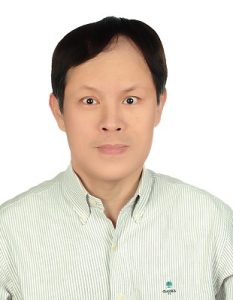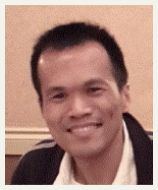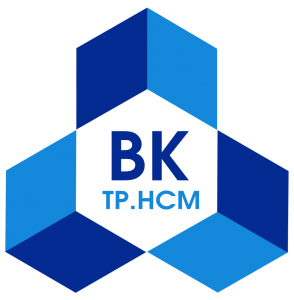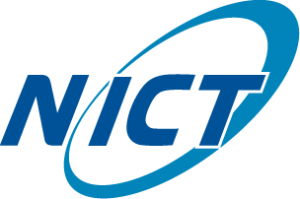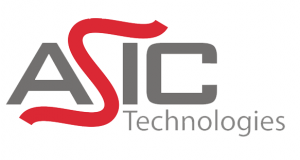KEYNOTE SPEAKERS
|
Bahram Jalali Professor University of California, Los Angeles (UCLA) |
Research Interests Silicon photonics and fiber optic communication, real-time streaming data acquisition and processing, biophotonics, rare cell detection, blood screening, nondestructive material testing and characterization, rogue wave phenomena Recognition IEEE Fellow Optical Society of America Fellow American Physical Society Fellow Society of Photo-Optical Instrumentation Engineers Fellow Northrop Grumman Opto-Electronic Chair in Electrical Engineering |
| Biography
Bahram Jalali is the Director of the Photonics Laboratory, the Fang Lu Endowed Chair in Engineering and Professor of Electrical and Computer Engineering at UCLA with joint appointments in Biomedical Engineering, California NanoSystems Institute (CNSI) and Department of Surgery at the UCLA School of Medicine. He received his Ph.D. in Applied Physics from Columbia University in 1989 and was with the Physics Research Division of Bell Laboratories in Murray Hill, New Jersey until 1992 before joining UCLA. He is a Fellow of IEEE, the Optical Society of America (OSA), the American Physical Society (APS), American Institute for Medical and Biological Engineering (AIMBE), and SPIE. He is the recipient of the R.W. Wood Prize from OSA, Aaron Kressel Award from IEEE, and IET Achievement Medal, and the Pioneer in Technology Award from the Society of Brain Mapping & Therapeutics. He was the Founder and CEO of Cognet Microsystems, a company acquired by Intel in 2001. He was elected into the Scientific American Top 50 and MIT Technology Review Magazine Top 10 in 2005. |
|
|
Keynote Talk Physics-AI Symbiosis: how to utilize physics to accelerate artificial intelligence Artificial intelligence and in particular deep learning networks (DNN) and recurrent neural networks (RNN) are revolutionizing computer vision and natural language processing (NLP) and are appearing in an increasing number of consumer and industrial applications. These networks are first trained offline on a GPU or high-performance CPU cluster for anywhere from tens of hours to a few weeks. The network is then deployed into an application where it takes in a continuous stream of input data and performs inference in real-time. Many applications such as autonomous vehicles and robotics have strict latency, throughput, and power requirement and demand fast inference at low power beyond what is achievable with conventional neural networks. While tremendous progress is being made by the industry in the form of AI accelerators, application of AI in realtime applications calls for a fresh look into the design of AI systems that offer not only speed and low power but also interpretability and zero risk. This talk will explore emerging techniques in which analog physical systems, as well as laws of physics, are being employed to enhance artificial intelligence. |
|
|
Patrick YUE Professor Dept of Electronic & Computer Engineering, HKUST, Hongkong |
Research Interest High-speed optical and millimeter-wave communication SoC design, visible light communication SoC design and application software, CMOS optical and mm-wave passive component modeling, wireless power transfer, and energy-efficient interface circuits for miniature photonic sensors. Recognition IEEE Fellow Optical Society of America Senior Member Director of HKUST-Qualcomm Lab Associate Director of HKUST Integrated Circuits Design Center |
|
Biography Prof. C. Patrick Yue is a Professor in Electronic and Computer Engineering and the Director of the HKUST-Qualcomm Lab. His research interest include high-speed optical communication and millimeter-wave broadband integrated circuit design, millimeter-wave passive component modeling, visible light communication SoC design, optical camera communication applications, and wireless power transfer system design. Based on his PhD work at Stanford University, he co-founded Atheros Communications in 1998. He applied his expertise in CMOS RF transistor and passive component modeling to enable the deployment of the world’s first 802.11a 5-GHz CMOS RF transceiver. After four years at Atheros, he joined anther Silicon Valley startup Aeluros to develop 10-Gbps CMOS serdes IC products for the optical-to-electrical modules based on the XAUI interface. During 2001-2003, Dr. Yue was a Consulting Assistant Professor in the EE Department at Stanford. In 2003, he joined Carnegie Mellon University in Pittsburgh, PA. as an Assistant Professor in the Department of Electrical and Computer Engineering. In 2006, Prof. Yue moved back to CA to join UC Santa Barbara where he taught until 2011. Prof. Yue is an active advisor to a number of startups based in the US and mainland China. Prof. Yue has contributed to more than 150 peer-reviewed technical papers and two book chapters. He currently holds 15 US patents of which most are employed in IC products. He was a co-recipient of the 2003 International Solid-State Circuits Conference (ISSCC) Best Student Paper Award, 2015 International IEEE Wireless Symposium and the 2017 IEEE Circuits and Systems Society Outstanding Young Author Award. He is the first author of a top-10 most cited paper in history of IEEE Journal of Solid-State Circuits (Google citation index over 1400). He has served on the organizing and technical committee of a number of international conferences including IEEE VLSI Circuits Symposium, IEEE European Solid-State Circuits Conference, IEEE International Wireless Symposium, IEEE RFIC Symposium, IEEE Asian Solid-State Circuits Conference, and International Symposium on VLSI Design, Automation and Test. He is an IEEE Fellow, an OSA Senior Member, an Editor for the Proceedings of IEEE, and the Membership Chair of the IEEE Solid-State Circuit Society. |
|
| Keynote Talk
Internet of Optical Things (IOOT): from Li-Fi Connected Lightings to ToF Sensors
|
|
|
Seung-Ki Sul Professor Seoul National University, Seoul, Korea |
Research Interest High-performance Electric Machine Control using Power Electronics,Electric Machine Drive and Control Power Electronics Recognition IEEE Fellow Acting Director and Consultant of Yaskawa Electric Co., Japan Vice Dean of Engineering College of Seoul National University President of Electric Engineering and Science Research Institute Funded by Korean Government Board Member of LS IS Co. Editor in Chief of Journal of Power Electronics President of Korea Institute Power Electronics IEEE PELS Member at Large Acting Consultant of LGE at Vehicle Business Div |
|
Biography Prof. Seung-Ki Sul (S’78, M’87, SM’98, F’00) received the B.S., M.S., and Ph.D. degrees in electrical engineering from Seoul National University, Seoul, Korea, in 1980, 1983, and 1986, respectively. From 1986 to 1988, he was an Associate Researcher with the Department of Electrical and Computer Engineering, University of Wisconsin, Madison. From 1988 to 1990, he was a Principal Research Engineer with LG Industrial Systems Company, Korea. Since 1991, he has been a member of faculty of School of the Electrical and Computer Engineering, Seoul National University, where he is currently a Professor. In 2000, he was elevated as a fellow of IEEE with the contribution to PWM technology. Prof. Sul is one of pioneers in the area of carrier based PWM technology applied to the control of the power converters. From 2005 to 2007, he was the Vice Dean of the Engineering College of Seoul National University. In addition, from 2008 to 2011, he was the President of the Electrical Engineering Science Research Institute funded by the Korean Government. He has published over 150 IEEE journal papers and a total of more than 350 international conference papers in the area of power electronics. He was the program chair of IEEE PESC’06 and general chair of IEEE ECCE-Asia, ICPE, 2011. He holds 16 U.S.A patents, 7 Japanese patents, 13 Korean patents, and granted 47 Ph.Ds under his supervision. The technology regarding sensorless drive of AC machine he worked for last 20 years has been commercialized by many companies such as Yaskawa Electric Co. as general purpose IPM drive, oil pump drive by General Motors Co., and LG Electronics Co. in washing machine. From 2011 to 2014, he had served as Editor-in-Chief of the Journal of Power Electronics, which is a SCIE registered journal, published by the Korean Institute of Power Electronics (KIPE), Seoul, Korea. For 2015, he was the president of KIPE. He was recipient of 2015 IEEE Transaction 1st and 2nd paper awards on Industrial Application, simultaneously. He was also recipient of 2016 Outstanding Achievement Award of IEEE Industrial Application Society. He received 2017 Newell award sponsored by IEEE PELS. From 2018 till early of 2019, he served as director of Seoul National University Electric Power Research Institute (SEPRI). His current research interests include power electronic control of electrical machines, electric/hybrid vehicles and ship drives, DC distribution system on buildings and ships, and power-converter circuits for renewal energy sources. |
|
| Keynote Talk
Power Electronics – Enabling Technology for Electric Energy Saving and Better Environment In this speech, the technologies for energy saving based on power electronics, developed for last 20 years at Power Electronics Lab., Seoul National University, Korea, will be introduced. Still, major portion of electric energy comes from coal fired power plant. And, the saving of electric energy directly linked to better environment by not only saving CO2 but also saving generating, transmitting, distributing facilities. Most regenerative energy are wasted and even it takes extra energy to cool down heat from the wasted energy. The technologies developed can recycle the regenerative energy effectively. In this speech, hybrid harbor crane handling container box, elevator system with simple regenerative circuit, and hybrid excavator with super-capacitor will be introduced as examples. The energy saving from the technologies are 20% ~ 40% in average. Such technologies will be applicable to many other areas thanks to the reduced cost of Power Electronics system and desires for better environment. |
|
|
Mohamed-Slim Alouini Professor King Abdullah University of Science and Technology, Saudi Arabia |
Research Interest Design and performance analysis of diversity combining techniques MIMO techniques Multi-hop/cooperative communications systems Optical wireless communication systems Cognitive radio systems Multi-resolution, hierarchical and adaptive modulation schemes Recognition IEEE Fellow IEEE Distinguished Lecturer for the IEEE Communication Society Associate Dean, Computer, Electrical and Mathematical Science and Engineering 2016 Recognition Award of the IEEE Communication Society Wireless Technical Committee 2016 Abdul Hameed Shoman Award for Arab Researchers in Engineering Sciences 2017 Inaugural Organization of Islamic Cooperation (OIC) Science & Technology Achievement Award in Engineering Sciences |
|
Biography Dr. Alouini was born in Tunis, Tunisia. He received the Diplome d’Ingenieur from the École Nationale Supérieure des Télécommunications (TELECOM Paris Tech) and the Diplome d’Etudes Approfondies (D.E.A.) in Electronics with Highest Honors from the Université Pierre & Marie Curie in Paris, both in 1993. He received the M.S.E.E. degree from the Georgia Institute of Technology (Georgia Tech) in 1995, and a PhD in Electrical Engineering from California Institute of Technology (Caltech) in 1998. He also received the Habilitation degree from the Université Pierre & Marie Curie, Paris, France, in 2003. Dr. Alouini served as a faculty member in the University of Minnesota, Minneapolis, MN, USA, then in the Texas A&M University at Qatar, Education City, Doha, Qatar before joining King Abdullah University of Science and Technology (KAUST), Thuwal, Makkah Province, Saudi Arabia as a Professor of Electrical Engineering in 2009. His current research interests include design and performance analysis of diversity combining techniques, MIMO techniques, multi-hop/cooperative communications systems, optical wireless communication systems, cognitive radio systems, and multi-resolution, hierarchical and adaptive modulation schemes. Dr. Alouini has published several papers on the above subjects and he is co-author of the textbook Digital Communication over Fading Channels published by Wiley Interscience. He has also won several awards in his career. For instance, he recently received the 2016 Recognition Award of the IEEE Communication Society Wireless Technical Committee, the 2016 Abdul Hameed Shoman Award for Arab Researchers in Engineering Sciences, and the Inaugural Organization of Islamic Cooperation (OIC) Science & Technology Achievement Award in Engineering Sciences in 2017. Other recognitions include his election as Fellow of the (i) Institute of Electrical and Electronics Engineers (IEEE), (ii) Academy of Engineering & Technology of the Developing World (AETDEW), (iii) European Academy of Sciences and Arts (EASA) (Class VI: Technical & Environmental Sciences), and (iv) African Academy of Sciences (AAS). He is also IEEE Distinguished Lecturer for the IEEE Communication Society and IEEE Vehicular Technology Society, member for several times in the annual Thomson ISI Web of Knowledge list of Highly Cited Researchers as well as the Shanghai Ranking/Elsevier list of Most Cited Researchers, and a co-recipient of best paper awards in eleven IEEE conferences (including ICC, GLOBECOM, VTC, PIMRC, ISWCS, and DySPAN).
|
|
| Keynote Talk
Smart Villages: When Affordable Electronics Meets Internet for All The role of Internet and Communication Technology (ICT) in bringing about a revolution in almost all aspects of human life needs no introduction. It is indeed a well-known fact that the transmission of information at a rapid pace has transformed all spheres of human life such as education, health, and economy to name a few. In addition, with the advent in Electronics and Photonics Technology (EPT), we have observed sustained growth and expansion in computation and display technology. From user demography perspective, urbanized population are the major beneficiary of such advances. Therefore, the benefits of ICT and EPT are yet to be experienced by almost 4 billion people in the world who are still “unconnected or under-connected” and suffer as such from the “digital divide,” a term coined in orderto emphasize the lack of ICT infrastructure in many parts of the world. Major challenges for widespread adoption of ICT and EPT in these areas are related to cost, lack of power supply, and complexities associated with learning and usage. However, if we can categorically overcome these challenges, then these technologies can be used for food, water, shelter, energy, environment, education, healthcare, and security. In addition, the wide-spread availability of these technologies, will lead to smart suburbs, smart towns, smart villages, etc., without the need to necessarily live in smart cities. This would reverse the trend and allow a more sustainable world with a more balanced distribution of the population density. In this context, this talk will introduce recently proposed solutions to provide high speed connectivity in rural areas along progress in affordable electronics to serve and contribute to the development of far-flung regions. In particular, new solutions for both: (i) integrated satellite-airborne-ground networks providing global coverage and connectivity and (ii) terrestrial mesh/multi-hop directive networks connecting underserved areas will be discussed. Moreover, some examples of democratized wearable electronics using Do-It-Yourself (DIY) assembly of paper along Android DIY applications capturing and displaying vital health signs over connected smartphones for real-time diagnosis will be presented. |
|
|
Jyh-Ching Juang Professor National Cheng Kung University, Taiwan |
Research Interest Control Engineering (Robust Control、 Servo Control) Aeronautical Engineering (Attitude control、 Guidance and Control) Electronic Navigation (Global Positioning System) Recognition |
|
Biography Jyh-Ching Juang is a Professor at the Department of Electrical Engineering, National Cheng Kung University, Taiwan. He received the B. S. and M. S. degrees from National Chiao-Tung University, Hsin-Chu, Taiwan, in 1980 and 1982, respectively, and the Ph. D. degree in electrical engineering from University of Southern California, Los Angeles, in 1987. He was with Lockheed Aeronautical System Company, Burbank before he joined the faculty of the Department of Electrical Engineering, National Cheng Kung University, Tainan, Taiwan in 1993. Dr. Juang is one of the premier researchers in GNSS (Global Navigation Satellite System) in Taiwan. He has developed several advanced algorithms for GNSS receivers and applications. He is also a pioneer in introducing nano-satellite technologies into university curriculum and promoting space related education. Under the support of the National Cheng Kung University, Dr. Juang has been coordinating a team that is devoted to the research on autonomous driving techniques. Highlights of the autonomous driving research includes the inclusion of deep learning and sensor fusion for perception, vehicle localization with adaptive environmental features, and open-source software development for multi-core platforms. |
|
| Keynote Talk
Autonomous Driving in Taiwan: Status, Challenge, and Opportunity
|
|
|
Aik-Chun Ng Technical Consultant Keysight |
Research Interest Communication system level design High-frequency semiconductor device modeling MMIC/RFIC designs 3D Electromagnetic simulation and analysis |
|
Biography Mr. Aik-Chun Ng is currently the Technical Consultant at Keysight EEsof EDA Division supporting their market leading flagship products like Advanced Design System (ADS), Integrated Circuit & Characterization Program (ICCAP) and Modeling System, GoldenGate, SystemVue etc. He is responsible for Keysight EEsof application support and consulting in South Asia Pacific since year 2000. He provides training and consulting to designers working on RF Communication applications like Defense communications as well as Commercial communication system like WiMax and LTE. His interests include communication system level design, high-frequency semiconductor device modeling, MMIC/RFIC designs as well as 3D Electromagnetic simulation and analysis. Aik-Chun Ng holds a B.Eng and a M.Eng degree in electrical engineering from Nanyang Technological University in 1998 and 2000 respectively. His main focus for the Master’s degree research is on the modeling and design of microwave/millimeter- wave components.
|
|
| Keynote Talk
Improving RF Module Design The RF and Microwave industry is trending towards increasing integration of various technology offers In order to achieve the performance needed for complex applications in the connected near future. Multi-technology designs are common using GaAs, GaN, SiGe/Si and mmwave CMOS processes. This paper explores various aspects of predicting performance of modules before prototype. The importance of understanding device models concepts, wide usage of statistical analysis And measurement challenges are discussed. We will also walk through few key aspects of the use of electrothermal simulation to understand, predict, and account for cross-circuit thermal coupling in a commercial HBT power amplifier. The future to properly design and integrate these technologies demands a new interconnected design flow that focuses on technology assembly and integrated EM design validation. |
|
|
Anthony Lord Director, RF Market Segment Formfactor |
Research Interest RF on-wafer measurements Recognition |
|
Biography Anthony Lord is Director RF Segment Business Development for Formfactor’s Probe Station Systems Business Unit. Anthony has been involved in many organizational roles within Formfactor and previously Cascade Microtech, including applications engineering, sales management, product line management, strategic marketing as well as segment marketing, and has been actively involved in the semiconductor and RF industry for 26 years. Anthony has published several papers on RF on-wafer measurements, as well as numerous workshops and presentations on on-wafer test applications. Currently Anthony is enjoying his role in understanding where the RF semiconductor market is heading, and how to position future Formfactor’s products to enable engineers to make the most accurate measurements with the fastest time to data. |
|
| Keynote Talk
The Importance of Accurate On-Wafer Device Measurements for Frequencies up to 1.1THz The benefits of higher frequency devices are now becoming reality, not only in specialized military and radar applications but also in consumer applications. Devices working in the mm-wave spectrum (30GHz to 300GHz) are becoming more mainstream and affordable. In the world of test, this introduces new problems when it comes to on-wafer measurement. Making measurement to a few GHz is easily achievable now, but with additional measurement channel losses, and probe placement accuracies becoming so much more critical at higher frequencies, it makes accurate and repeatable mm-wave measurements more challenging. In this presentation we will look at the market growth drivers, the challenges of 5G, Automotive Radar and other mm-wave device testing and some proposed new solutions for making on-wafer measurements easier to achieve. |
|
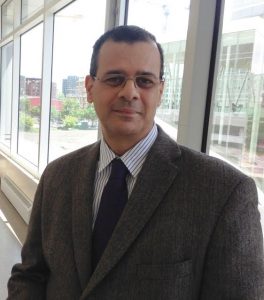
Nicolas G. Constantin Professor École de technologie supérieure, Canada |
Research Interests Mixed mode circuits in discrete technologies Test methods for analog and RF circuits and systems, in IC technologies and discrete components Analog and RF integrated circuits RF microelectronics and microwaves circuits for wireless communication RF transmitters and receivers Recognition Senior member IEEE Member of STARaCom Strategic Research Group, Canada |
|
Biography Nicolas G. Constantin received the B.Eng. degree from the École de Technologie Supérieure (ÉTS)–University of Quebec, Montreal, QC, Canada, in 1989, the M.A.Sc. degree from the École Polytechnique de Montréal, Montreal, QC, Canada, in 1994, and the Ph.D. degree from McGill University, Montreal, QC, Canada, in 2009, all in electrical engineering. He was involved in the design of microwave transceivers for point to point radio links from 1989 to 1992. From 1996 to 1998, he was an RF Design Engineer at NEC, Melbourne, VIC, Australia, where he was involved in the development of RF and microwave transceivers for mobile telephony. From 1998 to 2002, he was a Senior Design Engineer with Skyworks Solutions, Inc., Newbury, CA, USA, where he developed GaAs HBT RFIC PAs for wireless communications. At Skyworks Solutions, Inc., he was also actively involved in research on smart biasing and efficiency improvement techniques for RFIC PAs, and has authored three patents on the subject. He is currently an Associate Professor with ÉTS. His current research interests include the design and test of RF and millimeter-wave ICs and front-end modules for wireless communications. Dr. Constantin was a recipient of a Doctoral Scholarship from the Natural Science and Engineering Research Council of Canada and a Doctoral Scholarship from ÉTS. He conducts research in collaborations with major companies in wireless communication and avionics.
|
|
| Keynote Talk
Research Collaboration Between University and Industry Many aspects define the success of a research collaboration between a university and an industrial partner. It is well known that there are complementarities in their research interests: academic researchers favor the pursuit of more fundamental concepts and the most innovative solutions, while an industry partner is more often interested in the fastest and most commercially successful solutions to its engineering challenges. However, in the context involving graduate students especially, the implications of these complementary interests on the actual dynamics of the research work are often underestimated, and consequently their impact on the unfolding of the research and the outcome are often accounted for too late in the partnership. In the area of RF Integrated Circuits in particular, this deserves careful consideration in the planning of the research activities given the sources of increasing challenges faced by RFIC developers, such as shorter time to market constraints; development plans with increased dependency on customers’ system specifications that are subject to changes; larger number of projects to be managed simultaneously, implying more burden on the company for a minimum of technology support to academic researchers. In this talk, we discuss the implications of such aspects on the dynamics of the research work through recent examples of research collaborations and we highlight the importance of adopting some strategies in the planning to favor the best possible outcome. |
|
 English
English
